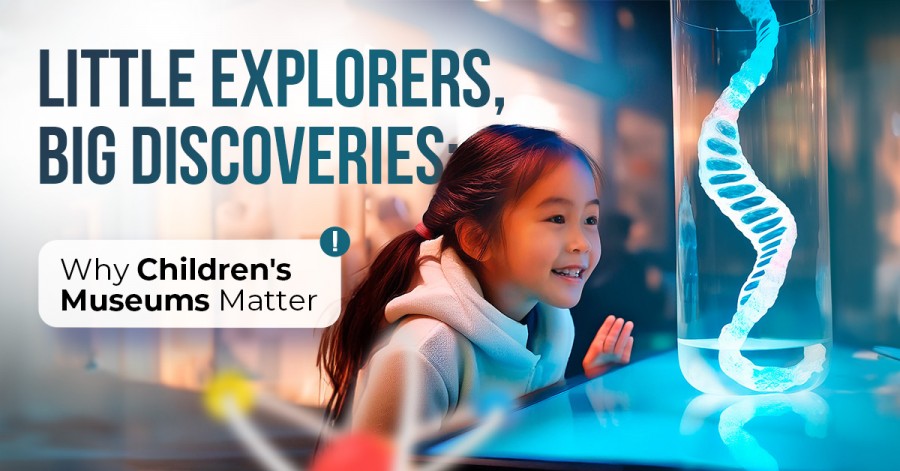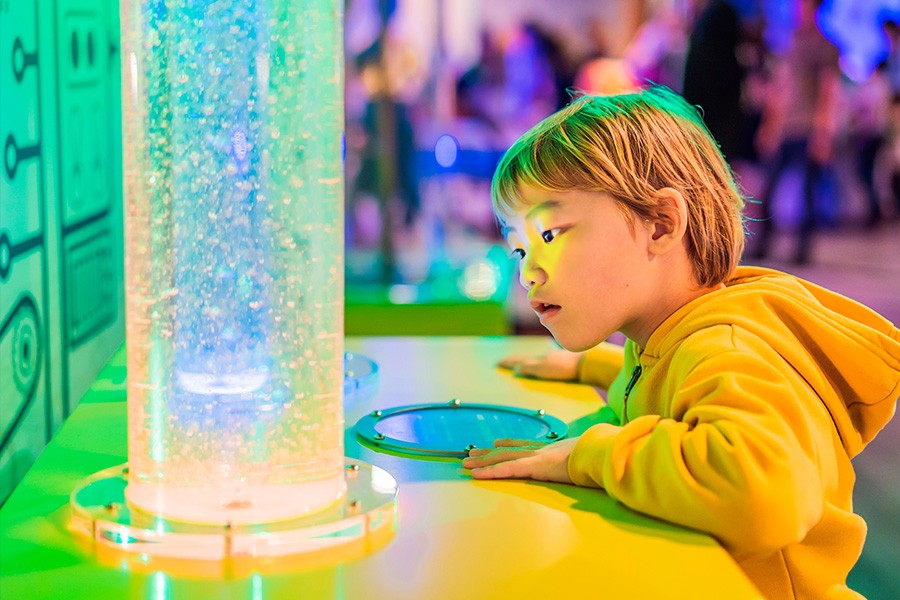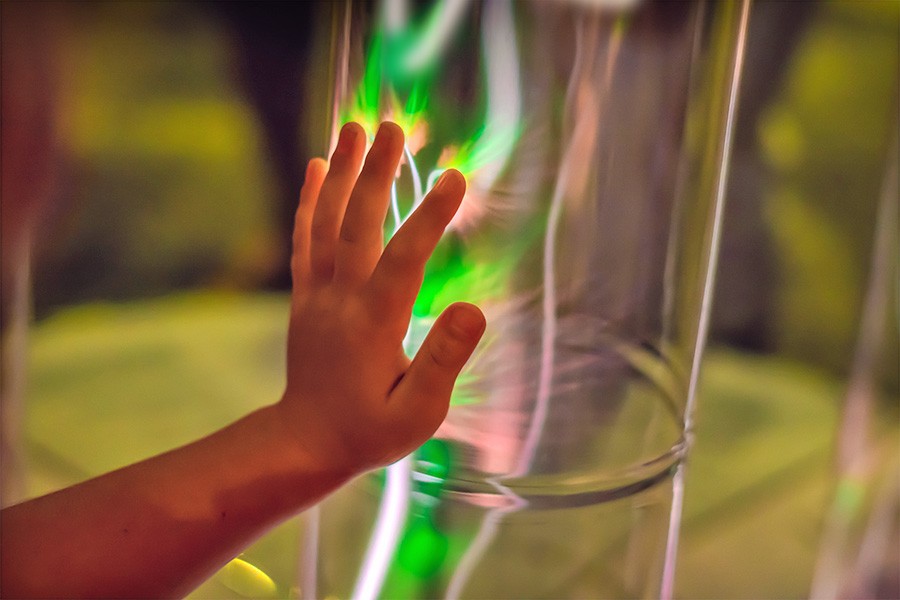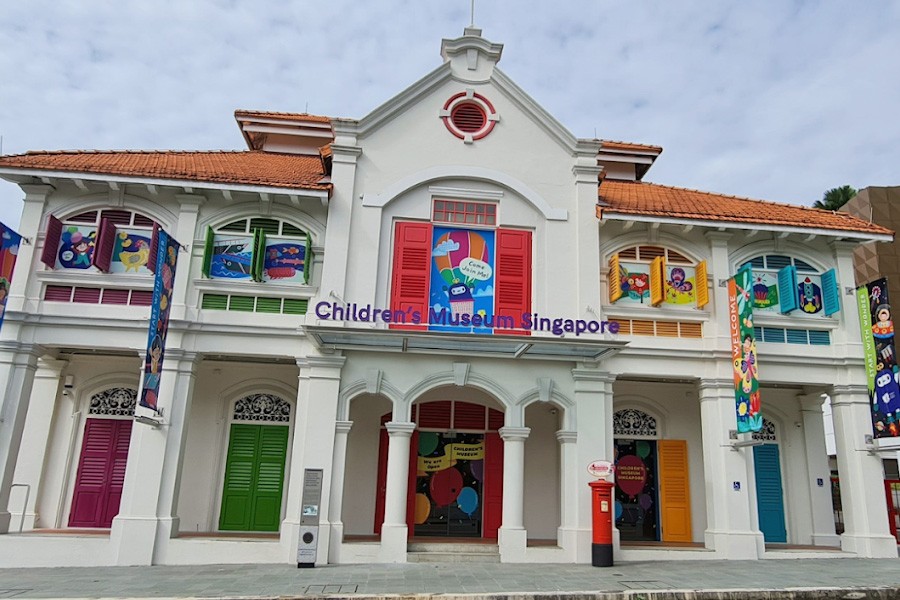Little Explorers, Big Discoveries: Why Children's Museums Matter
Published 27 September 2024 at 10:35
Tickikids Blog Singapore > Parenting > Little Explorers, Big Discoveries: Why Children's Museums Matter

Children’s museums are vibrant spaces where learning comes to life through play and hands-on exploration. Designed specifically for young explorers, these environments offer endless opportunities for children to discover, create, and imagine. Whether delving into science experiments, exploring history, or crafting works of art, children’s museums provide a welcoming and inclusive space where kids of all ages and abilities can learn and grow. In today’s fast-paced, complex world, children’s museums stand as essential havens where kids can explore, experiment, and learn alongside the supportive adults in their lives. Interactive exhibits of all kinds provide hands-on opportunities to uncover the mysteries of science, space, nature, and engineering, making every visit an adventure filled with discovery. In this article, TickiKids explores the unique role of children’s museums and the exciting experiences they offer for both kids and families.
Check our list of Museums in Singapore
Countless families flock to children’s museums for one-of-a-kind, hands-on experiences that bring learning to life. These vibrant spaces offer more than just entertainment; they provide opportunities for discovery, bonding, and creativity that transcend the ordinary. Families engage in interactive exhibits designed to spark curiosity and encourage children to explore the world around them in fun, meaningful ways. Whether it's through collaborative activities or immersive storytelling, these museums create a shared space where both kids and adults can learn, play, and grow together, fostering lifelong memories and a love for exploration. The combination of face-to-face interactions and dynamic learning environments ensures that every visit is a unique adventure, offering moments of joy and enlightenment for all ages!
Handpicked for Families Children Museums Guide 2025 - Big Fun for Little Ones in Singapore

Image Credit: Depositphotos
Inside the Wonder
Children's museums are full of exciting exhibits that make learning fun and engaging. Babies and toddlers can engage their senses by feeling various textures, stacking colourful blocks, crawling through tunnels, or chasing after bubbles. Or they can enjoy water play stations, where they splash and experiment with floating toys, or explore soft play areas filled with gentle climbing structures and foam shapes. Story-time sessions and sensory art activities like finger painting or moulding clay also offer creative outlets for little ones. These interactive environments encourage movement, curiosity, and discovery, providing endless opportunities for toddlers to explore and grow!
Many feature interactive stations where older kids can discover how everyday machines like pulleys, gears, and levers operate—allowing them to crank, turn, and lift objects as they explore the mechanics of motion. In science zones, children can experiment with magnets, test the principles of aerodynamics by designing and launching paper planes, or create simple circuits to light up a bulb.
In other areas, young explorers might step into a mock space station, don astronaut gear, and learn about space travel while navigating a simulated spacecraft. They might even observe the stars and planets in a kid-friendly planetarium. Nature exhibits could let children dig for fossils like real palaeontologists, explore a mini rainforest environment, or interact with live insects and reptiles to learn about habitats and ecosystems.
Some museums have water play areas where kids can build dams, direct water currents. There may also be construction zones filled with giant foam blocks or real tools, where budding architects can design and build their own structures. Children could also explore human anatomy by walking through a giant model of the human body, learning how organs function, or testing their heart rates as part of an active wellness exhibit!
Kids can step aboard a 19th-century ship here, exploring cabins, raising and lowering sails, or signalling with semaphore flags. Nearby, kids might be building intricate underground tunnels with soft blocks, embodying the spirit of play and discovery. At children's museums, the golden rule is simple: touch, explore, and enjoy!
The History of Children’s Museums
The concept of children’s museums, which began in the United States, has since spread across the globe. The Brooklyn Children’s Museum, founded in 1899 by the Brooklyn Institute of Arts and Sciences, is widely recognised as the first museum specifically designed for children. Early children's museums were born out of the natural history museum tradition, with a focus on objects and hands-on discovery. Curators promoted a learning approach that empowered children to explore and understand the world by touching and examining artifacts. Visitors could compare the weight, texture, and composition of minerals, and learn to use tools like microscopes to inspect natural specimens.
More to Discover: Things to Do with Kids in Singapore
These early institutions believed that learning should be fun and immersive, encouraging a deep connection with the natural world. Nature clubs, field trips, and live animal exhibits were common, with gallery instructors guiding children through interactive games on topics like animal classification, shells, and minerals. The focus was on learning by doing, making education a joyful and engaging experience for young visitors.
As the twentieth century progressed, children's museums gradually shifted from showcasing objects to offering more interactive and experiential exhibits. This evolution saw the rise of dedicated children's sections in larger museums, complete with hands-on activities tailored to engage young minds. Today, the emphasis is on play-based learning, where children are encouraged to explore, create, and interact with exhibits designed specifically for their development, making children's museums a unique blend of education and entertainment across the world.

Image Credit: Depositphotos
Welcoming and Inclusive Spaces
Children’s museums are intentionally designed to be welcoming, inclusive spaces where every child feels a sense of belonging and comfort. The exhibits are crafted with young minds in mind, offering furniture, props, and materials scaled to child-friendly proportions, ensuring that kids feel right at home as they engage with their surroundings. Whether it's miniature tables for crafts, tiny play kitchens, or low-level interactive displays, everything is carefully arranged to invite exploration and play at a level that is physically accessible to young children.
Beyond these thoughtful designs, many children's museums go the extra mile to ensure that their spaces are accessible to all visitors, including those with diverse needs. Exhibits and activities often incorporate tactile elements, audio guides, or sensory-friendly zones, making the museum experience enjoyable for children who rely more heavily on their sense of touch or sound. Museums frequently feature ramps, wide pathways, and adaptable exhibit designs to accommodate visitors using wheelchairs or mobility aids, ensuring that no child or family member feels excluded.
Some museums even offer sensory-friendly hours or exhibits with softer lighting and sound modifications to cater to children with sensory sensitivities, such as those on the autism spectrum. There may be quiet rooms or break areas where families can take a moment to relax if children feel overstimulated. Staff members are often trained in inclusivity and accessibility, equipped with the knowledge to assist children and families with a variety of needs.
Children's museums strive to create environments where all children, regardless of physical, cognitive, or sensory abilities, can fully participate in the learning and play experiences. By fostering a space where differences are not just accommodated but celebrated, these museums offer opportunities for children to learn, grow, and explore alongside their peers and family members, making every visit a meaningful and enriching experience.

Image Credit: Google Photos
Children’s Museum Singapore
Children’s Museum Singapore is the first and only museum in the country dedicated entirely to children aged 12 and under, offering a world of wonder, discovery, and playful learning. At the heart of the museum’s mission is the belief that learning happens best when children are free to explore at their own pace. Through hands-on exhibits, immersive storytelling, and engaging workshops, the Children’s Museum Singapore creates endless opportunities for children to learn about history, culture, science, and the arts—all while having fun. It’s a place where kids are encouraged to ask questions, think critically, and let their imaginations run wild, making it the perfect destination for joyful, meaningful learning. Children can journey back in time, braving stormy seas and docking at a vibrant port called Singapore, where history comes to life. Here, they can wander through the lively shophouses of a bustling marketplace, listen to the captivating tales of shopkeepers, and even step into the shoes of heritage tradesmen. From trying out the skills of a street barber to experiencing the art of traditional letter writing, kids will be immersed in Singapore's rich cultural past, offering them a hands-on, interactive glimpse into the trades and lifestyles of yesteryear!
Creating Lasting Memories
- To make your visit unforgettable, focus on creating moments that resonate with your child. Engage in the activities they love most, capture special moments with photos, and encourage them to talk about their favourite parts of the experience. These shared experiences will leave a lasting impression and provide cherished memories long after your visit.
- Plan your visit. For detailed information on hours, exhibits, and special events, it’s a good idea to call the museum or check their website before your visit. This way, you can make the most of your time there and ensure a smooth experience.
- Follow your child’s lead. Although it might be tempting to rush through all the exhibits to cover everything, your child will likely get more value from focusing on just a few. Quality over quantity often leads to a more meaningful experience, so let your child take the lead and explore at their own pace, spending time where their interest naturally flows.
- Encourage your child’s learning style. To support your child’s engagement, ask open-ended questions that prompt deeper thinking and exploration. Instead of questions that can be answered with "yes" or "no," try asking, "What do you think will happen next?" or "Why do you think that object works this way?" These types of questions encourage curiosity and help your child reflect on what they’re learning and experiencing.
You May Also Like: Our Guid for Choosing the Best Extracurricular Activities